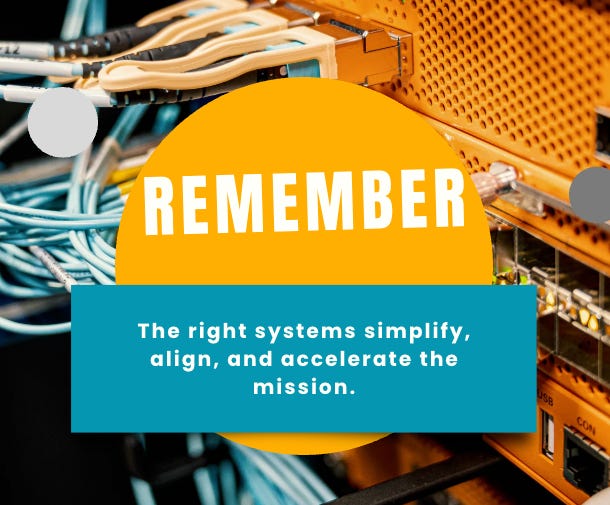Is Complexity Killing Your Mission?
Many leaders have felt it: the creeping weight of complexity that slows down their mission’s momentum. It’s like adding more and more luggage to the car for a long road trip until eventually, the car can’t move at all.
For nonprofits and mission-driven organizations, this isn’t just an annoyance. It’s a real threat. The systems and processes that once helped deliver impact become bottlenecks. Meetings multiply, decision-making stalls, and team members start to feel like they’re wading through quicksand just to make simple progress.
How do we know when complexity is starting to choke the life out of our mission? And, more importantly, how can we break free?
What the Numbers Won’t Tell You
You might look at your metrics and think everything’s fine. Donations are stable, reports are submitted, and deadlines are met. But complexity is sneaky. It shows up in the conversations your team is having or avoiding. It appears in those extra steps you have to take just to get a basic approval. It’s not about the big crises; it’s the constant drag that makes small tasks harder than they should be.
Peter Drucker famously said, “There is nothing so useless as doing efficiently what should not be done at all.”
That’s where complexity hides: in processes that no longer serve their purpose but persist because “we’ve always done it this way.”
Practical Steps to Simplify Without Sacrificing Quality
Start With a Purpose Check.
Review your mission statement, goals, and current projects. Are you still working toward the same vision, or have you added layers of tasks that don’t directly support your core purpose? If a process or requirement doesn’t directly contribute to the mission, it’s time to rethink it.
Get Your Team Talking.
Open a dialogue with your staff about what’s slowing them down. Don’t just ask what’s going wrong; ask what’s taking longer than it should and why. They often know where the real bottlenecks are and can offer ideas on how to fix them.
Automate and Delegate.
Not every task needs a human touch. Explore tools and systems that can handle repetitive tasks. Free up your team’s time so they can focus on the creative, high-impact work that can’t be automated.
Create Decision Pathways.
Who needs to sign off on what? Streamline your approvals so the right people are involved at the right time. Simplify the chain of command so decisions don’t languish for weeks waiting for a green light.
Moving Forward With Clarity
Complexity can’t be eliminated overnight, but it can be managed and reduced. As you begin to untangle the processes that no longer serve you, you’ll find your team moving more quickly, communicating more clearly, and focusing more energy on what really matters: delivering on your mission.
What’s one step you can take today to simplify the way your organization works?



